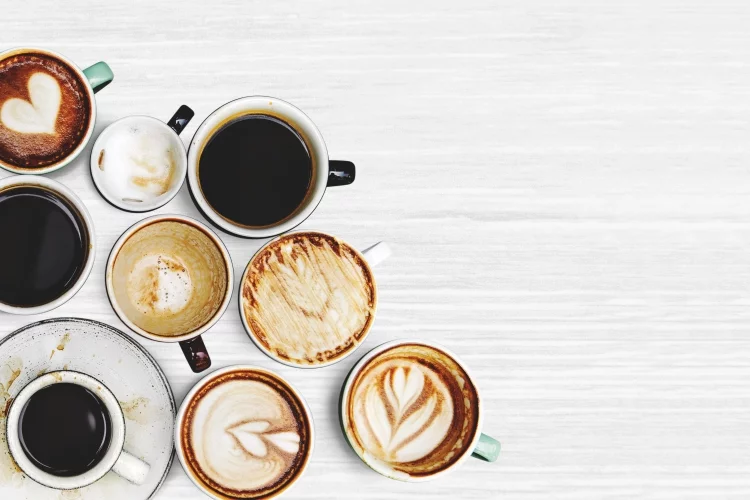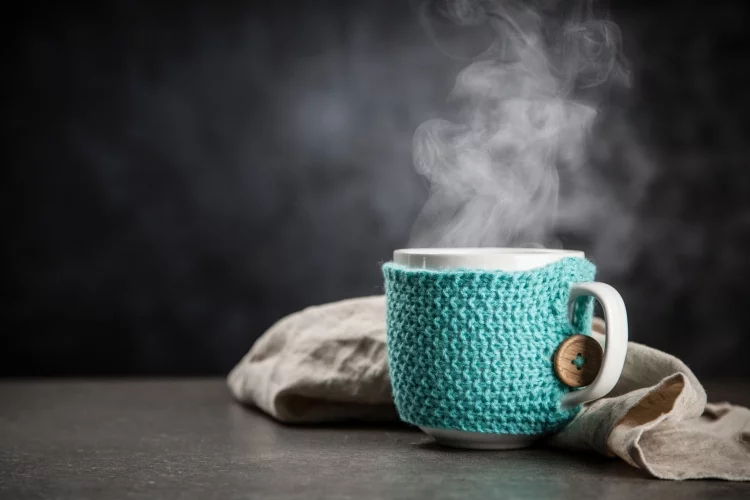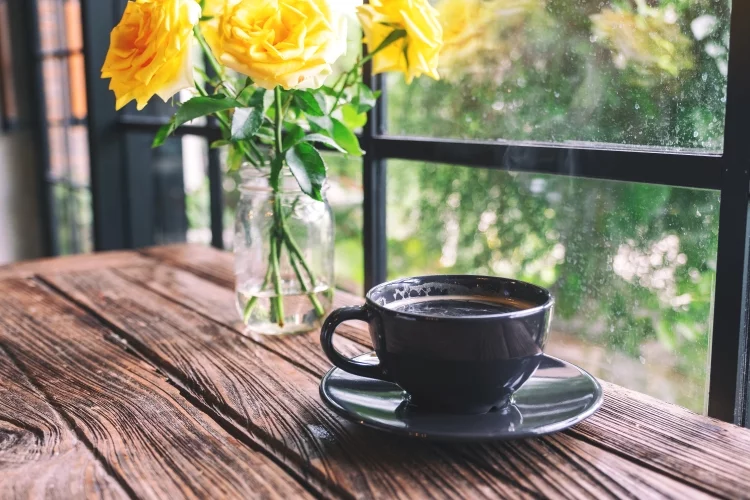Step by Step Guide to Cupping Coffee
by Selmir Omic
Cupping or sensory analysis is a method used for analyzing and grading coffee. A light roast will generally have more complex flavors than a dark roast because of its lower concentration of oils. A light roast has more surface area exposed to the air, while dark roasting drives off the lighter compounds creating a different composition. There is also an issue with storing coffee beans since they draw moisture over time and this will cause some deterioration in flavor quality.
Contents
What is Cupping Coffee ?

Cupping is the accepted practice for evaluating coffee quality, and it's a terrific method to learn further about coffee even if you're just a consumer, a trader, a roaster, or even a coffee grower interested in learning more about the beverage. Attending a cupping session, on the other hand, can be demotivating, especially if you've never done it before.
Using cupping, you can determine everything about a sample of coffee, from its overall quality to its personal qualities (such as body or acidity) and specific flavor notes. Cupping is only one of many methods for tasting coffee, but it is a very excellent process for tasting a large number of different coffees at the same time.
Normally, there is a diversity of samples available during a cupping session. They may be coffee from the very same origin but from separate farms, they can represent various types and processing techniques, and they could even be from different nations. This variety is advantageous when considering buying or selling coffee, or simply when looking to broaden your experience and knowledge.
While cupping was initially used to guarantee that coffee samples remained free of faults, the specialty coffee market has adapted the practice to aid in the description of a coffee's flavor characteristics.
When it comes to cupping, it is said to have begun in the late nineteenth century, when traders would test a range of coffees in order to pick which kinds they wanted to purchase and to test for consistency. During Cup of Excellence competitions, cuppings began being utilized in 1999. As a result, the Specialty Coffee Association of America developed rules that have since been universally adopted by the worldwide specialty coffee industry.
The coffee industry today employs cuppings in the same way that those 19th-century vendors did: to assess the coffee's qualities, make decisions on purchasing, and ensure consistency. "Cupping enables the development of a standardized approach and language that can be utilized and comprehended anywhere.
Communication with partners of the supply chain is greatly enhanced as a result of this; for example, exporters and farmers cup their coffee in the same manner as baristas and roasters, completing a feedback loop that leads to improved quality and value."
Cupping, on the other hand, is not limited to buying choices and quality control; it may be used to identify appropriate roast profiles, brewing procedures, and other factors as well.
Cupping is something I like to think of as seeing through a window into the possibilities of a coffee. Through the dissection and analysis of fundamental elements of taste such as acidity, sweetness, and aftertaste, along with more esoteric and ephemeral characteristics of flavor notes, we can gain insight into the best ways of highlighting the coffee's best attributes, either in a different production roasting style or when it's brewed in service as an espresso or pour over, for example.
The History of Coffee Cupping
Coffee cupping originated as a way to distinguish high quality coffee from low quality. While now considered mainly a marketing gimmick, the practice is still useful as a way of identifying good and bad aspects in any given cup.
Coffee cupping was first documented by the Dutchman Douwes in 1696 and later reported by the British trader Sir Hans Sloane in 1722. It was then developed by David Heinrich Kuhn, who is credited with the common form used today.
Coffee cupping is now practiced worldwide as a way of distinguishing between good and bad coffee beans, brewing methods, or roast styles. This is done by using small cups to slurp heated coffee, with the help of a spoon. It is often confused with wine tasting, which has more similarities to the cupping process.
The Art of Cupping Coffee: A Step-by-Step Guide

Intricacy abounds in the world of speciality coffee, particularly when it comes to producing ideal outcomes that include superb tasting notes, sweetness and acidity, balance and aftertaste, as well as everything else besides. The mystery of how that early pour-over produced by your colleague barista tastes so damn amazing, or how your own brewed beverages can produce such dynamic and exquisite flavors, is probably beyond you. As a matter of fact, roast samples of coffee are rated and cupped by a chain of coffee specialists before they are bagged and sold in retail stores and cafes.
Cupping is a universally recognized and standardized way of evaluating and scoring coffee that is used by everyone from green bean buyers to roasters to quality control professionals to baristas and many others along the supply chain. Cupping is critical for green coffee purchasers because it allows them to choose which coffees will be bought and shown to clients. For roasters, cupping is the process of fine-tuning a roast profile in order to guarantee that the coffee development is optimal. For quality control professionals, this means ensuring that every cup of coffee that leaves the roastery and finds its way into coffee stores or online for purchase tastes delicious and is free of any possible faults or strange flavors. In the case of baristas, this might include broadening one's taste, being acquainted with other origins, or even competing on a national level to win the title of Cup Tasters Champion.
Thanks to advancements in technology, this way of grading or tasting coffee is no longer just available to specialists. Listed here are all of the supplies you'll need to perform a good cupping procedure, as well as the steps to follow.

Needed Supplies
- Coffee
- Timer
- Grinder
- Cupping spoons
- Cupping bowls
- Scale
- Rinse cups
- Mug or glass
- Vessel (to collect used coffee grounds)
- Hot water element such as clyde or corvo EKG
Instructions
Step 1: Continue with this procedure for each coffee, beginning with 2 grams to guarantee that no other coffees in the grinder will interfere with the tastes of the coffees you are grinding. Using a fine-mesh grinder, coarsely grind each coffee bean until it resembles gritty sea salt.
Step 2: using 2 cupping bowls for each sample, place each 9-gram portion of coffee into the assigned cupping bowls. Ensure to utilize 2 for each sample since you never know when a flaw may slip into a bowl of material. And besides, two is always preferable than one in many situations. Take note of how each coffee smells when it is dry.
Step 3: Bring your water at a temperature of 200 (+/-2)°F (110 ℃).
Step 4: Using a timer, start pouring water weighing 150 grams into each bowl, one at a time.
Step 5: Observe the coffee's moist fragrance.
Step 6: During the fourth minute, begin cracking the crust with a fork. Using the spoon, gently press the coffee grounds to the back of the bowl until they are fully incorporated. After breaking the crust in each dish, ensure to rinse the spoon.
Step 7: Using 2 spoons, take the leftover coffee grounds and froth from the brewing vessel and deposit them in the spent coffee grounds dish.
Step 8: Allow the coffee to cool for 13-15 minutes before beginning to taste the various blends.
Step 9: Slurp the coffee to enable it to spread evenly over your tongue, allowing you to enjoy the entire spectrum of tastes. It is possible to experience distinct flavors and a wider spectrum of flavors when the coffee cools down.
How to Avoid the Most Common Mistakes

Cupping may seem intimidating at first, but the procedure is really rather straightforward. In addition to being acquainted with the guidelines and assessment sheet, keep the following pointers in mind while completing the assignment.
When individuals are discussing flavor and scent notes while cupping, they are more likely to discover comparable sensory notes even if they would not have otherwise noticed them. Maintain your silence in order to prevent influencing other people's opinions. The next section will be devoted to debate.
Professionals in the coffee industry, who taste hundreds of coffee samples per day, advocate spitting their samples of cupping into separate spittoons or cups to avoid contamination. Swallowing significant amounts of caffeine may have negative short-term consequences on the body and can also begin to affect your taste, causing you to lose your ability to notice subtle scents and flavors.
The most essential thing to remember when it comes to cupping is to avoid being overwhelmed by the possibly complicated methods and terminology that comes with it. Concentrate on being accurate and characterizing examples using your own frames of reference for the time being, at least to begin with. Over time, you will get more acquainted with the processes and the typical notes that are used.
Tips for Improving Your Cupping Skills

Keep practicing, particularly with other people, since this is the most effective method to progress. Cupping with others is usually preferable than cupping alone since it allows for more practice. In the same way that reading an article or viewing an instructional video may help you learn more, observation and repetition can help you learn more.
It might be beneficial to discuss tactics and sensory experiences with others in order to improve your abilities or to broaden your vocabulary and knowledge. Be thorough, take your time, and go back and forth to validate or disprove your prejudice."
Understand who you are as well. "Being calm, prepared and open-minded is equally as essential as knowing how to use the cupping form. This practice is equal parts physical and mental, so being calm, prepared and open-minded is as essential as understanding how to use the cupping form. Do you seem particularly exhausted? Did you have a burn on your tongue the other day? Do you have a naturally under or over sensitive palate to different flavors, such as sweetness or acidity? Everything will impair your capacity to maintain the highest level of objectivity imaginable."
It will also be beneficial to study the World Coffee Research Sensory Lexicon as well as the SCA's Coffee Taster's Flavor Wheel. Both define in varying degrees of detail the aromas, flavors, and textural characteristics that you can hope to encounter in a cup of coffee, depending on your preference.
During times when you aren't cupping, we suggests that you exercise your palate by focusing on the big-picture aspects first: acidity, sweetness, viscosity (body), and aftertaste, after that, narrow your focus to more specific flavors.
And, perhaps most crucially, see every drink and meal as a chance to put your skills into practice. Taste various percent of chocolate side-by-side or other fruits of comparable sorts, as well as experimenting with new flavors and textures. In addition, if you're having trouble identifying certain notes or flavors, why not try any food or drink that normally includes those notes or flavors?
The Different Flavors That Can Be Found in Cupped Coffee
To really understand how these flavors can vary from coffee to coffee, we must first give some background on the processing that most green (unroasted) coffee beans undergo in order to turn them into the delicious brews we love.
Most coffee beans are harvested by hand, and each region (and sometimes even specific farms) has its own traditional methods of harvesting. Coffee is then sorted to remove any defective beans or other foreign material that may be mixed in with the rest of the harvest. The green coffee is then transported to a facility for further processing.
The Processing of Green Coffee
When you buy green coffee, it has some moisture content (often around 10-12%) and is stored in large burlap bags (see image on right). As the coffee continues to lose moisture while resting in the bag, it will come into equilibrium with the surrounding air, which is mostly just dry air, so the coffee's equilibrium will be at an environment that has a much lower humidity level. Once it reaches this state, the coffee is then put into large silos where it can begin to rest for future processing.
The different stages of green coffee processing are outlined below in order from when the beans are first placed in the silo to their ultimate shipping out for roasting.
Fermentation
After resting in the silo, some coffee farms will allow the beans to ferment (here is an example of what you see when you visit a coffee farm, though it's not necessarily representative of all coffee farms). Fermenting is simply letting the green coffee beans sit in the silo for an extended period of time. This allows some moisture to escape from the coffee beans, but also can provide other benefits including changing the acidity of the coffee and making it easier to remove any defects or remaining fruit flesh after hulling.
Hulling
Once out of the silo, many farms will begin a process known as "hulling" the coffee. This is where any remaining fruit flesh or seeds that are still attached to the beans will be removed. Some farms may also ferment the green coffee at this stage, while others may put it straight into a machine.
Machine Hulling
In this process, a machine removes all of the fruit flesh and bad beans, leaving only the green coffee beans. This is probably the most common method of removing fruit flesh and defects from green coffee.
Hand Hulling
A process where workers remove all of the fruit flesh by hand. This is a more time-consuming process that also requires more manpower, but it can result in higher quality coffees since there are fewer opportunities for defects or bad coffee to sneak into the final product.
Whole Fruit Removal
In this process, the entire fruit is removed from the green coffee beans before being sent to a dry milling facility where it will be stored until ready for roasting.
Dry Milling
This is where the drying of the green coffee happens. During this time, the green coffee loses about half of its weight as moisture is removed from it. The beans are usually spread out on large patios where hot air is blown over them until they reach a moisture level that makes them stable enough for shipping or storage.
Pulping
In this process, a machine removes the dried fruit layer surrounding the coffee seeds. The process is slightly different depending on the equipment used and farm, but there are generally 2 primary approaches:
Mechanical Pulping
In this method, a machine strips the outer layer of the coffee seed using sharp metal blades. This causes friction that heats up the seed, allowing for some water to be released in a method know as "sweating."
Wet Pulping
In this method, much more water is used and the process happens in a tank. The coffee seeds can be "sweated" using this wetter approach since water provides greater lubrication than air alone.
Drying / Curing
At this stage, the green coffee beans are dried further to reduce their moisture content to approximately 9-11%. This is done either completely by air or in a machine with hot air. The difference between the two methods is that some roasters believe that coffee beans dried by air may have different flavors than those dried using machines.
Roasting
In this phase, the green coffee beans from various farms are brought together and roasted to the roaster's specification. This process is where many of the different flavors found in coffee are created, as well as any defects that might be present within the green coffee beans.
Decaffeination
If there are any remaining impurities or bad flavors after all of this processing, it might require additional treatment using solvents to extract them. This is a controversial process since in some cases the solvent itself may add a different flavor to the coffee, but in general this processing treatment can be minimized.
Ground / Prepared
At this point, the green coffee beans have been roasted and decaffeinated if required. If they are going to be sold whole instead of prepared for grinding at a later time, they must then be ground to expose the flavourful oils inside.
Grinding / Brewing
This is where your coffee finally gets brewed and it can include some or all of the following processing steps:
Single Step Grinder
A machine that grinds the whole roasted coffee beans into a fine powder at one time. Some of these also have a "brew now" feature that will make a pot of coffee with the ground beans.
2 Step Grinder
A machine that grinds roasted coffee beans into coarse size chunks first, and then further grinds them to a fine powder once they are inside the brew chamber. This allows for better distribution of flavors during the brewing process. This is the preferred type of grinder used by baristas since it gives them more control over the final product.
Burr Grinder
A grinder that uses rotating metal plates with small teeth to grind coffee beans into a fine powder, much like the 2 step grinder but instead of having separate chambers for coarse chunks and fine powder, it does both steps simultaneously.
Brewing
The process of brewing coffee with hot water and ground roasted coffee beans. This is some times done in an automated fashion but more often than not it's a barista that is controlling the process to ensure that each cup has the flavor profile they are looking for.
There are many different stages in the processing of green coffee beans, and each has its own unique set of challenges. Sometimes these are overcome in a single farm or multiple farms but often they require blending different types of green coffee beans together to mask any potential defects that might exist within them.
Conclusion for Cupping Coffee Lovers
- Cupping is a coffee tasting ritual that helps you evaluate the flavor, acidity, body, and sweetness of different coffees
- The cupping process is simple - just add hot water to ground coffee, let it steep for four minutes, then slurp it up!
- By cupping different coffees side-by-side, you can start to develop an understanding of the unique flavors and aromas that each coffee has to offer
- Cupping is also a great way to learn about the different brewing methods and how they affect the taste of coffee
 |
 |
 |
 |

About Selmir Omic
Selmir Omic is KYG's cannabis lifestyle writer. He currently resides in San Francisco and can often be found enjoying design-forward cannabis accessories, candles and seltzer simultaneously. When he's not writing about pot or waxing poetic about vape pens, Selmir can be counted on to offer sage advice about the best strains for anxiety or how to make cannabutter without a stovetop.
Thoughts on "Step by Step Guide to Cupping Coffee"
 |
 |
 |
 |
Get FREE Coffee Gifts now. Or latest free grinders from our best collections.
Disable Ad block to get all the secrets. Once done, hit any button below
 |
 |
 |
 |